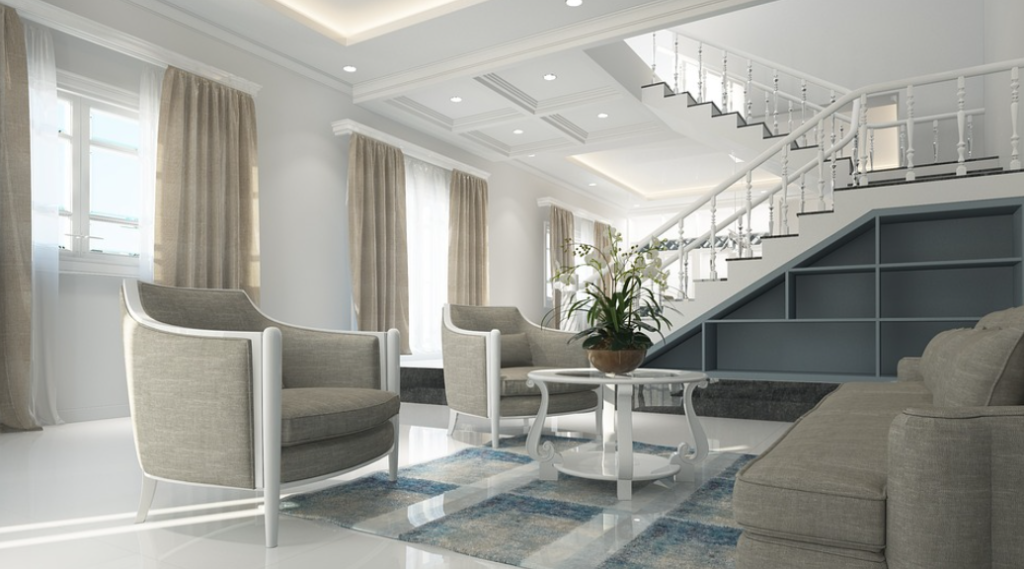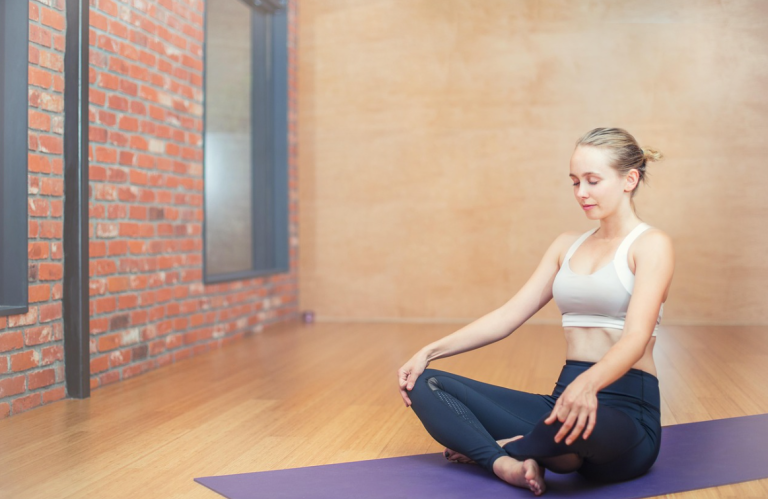
Introduction: Why Your Home Should Be a Stress-Free Zone
In today’s fast-paced world, home should be a sanctuary—a place where you can unwind, relax, and recharge. But for many of us, it becomes the opposite: a source of stress. Whether it’s clutter, chaotic surroundings, or an overwhelming amount of things to do, our homes can sometimes feel like an extension of our busy lives, rather than a refuge. The good news? You can turn things around with some simple changes that create a stress-free environment. Let’s explore how small adjustments can transform your home into a calming zone that promotes peace of mind.
The Power of Your Environment on Mental Health
Your environment significantly impacts your mental well-being. Imagine entering a room cluttered with items you don’t need, with harsh lighting and overwhelming noise. How does that make you feel? Probably stressed, anxious, and mentally drained.
Conversely, a well-organized and serene space can help you feel more relaxed, focused, and calm. It’s not just about aesthetics; it’s about how your space makes you feel emotionally and mentally. Small changes can have a profound effect on how your mind responds to your surroundings.
How Clutter Affects Your Mindset
Clutter is like a silent stressor. It can make you feel overwhelmed and distract you from focusing on the present. Studies show that clutter contributes to anxiety and can even lower productivity. By eliminating unnecessary items and keeping only what brings value to your life, you create a space that promotes tranquility and mental clarity.
The Role of Color and Lighting
Color and lighting are more than just visual elements—they have a direct impact on your emotions. Bright, bold colors can energize a space, while softer tones, like pastel blues or greens, can create a peaceful, calming atmosphere. Similarly, lighting influences mood; soft, warm lights are more relaxing, while harsh, fluorescent lighting can trigger stress and tension.
Decluttering Your Home: The First Step Towards Tranquility
When it comes to making your home a stress-free zone, decluttering is the first and most important step. It’s not just about aesthetics; it’s about creating mental space for calm and relaxation.
Why Decluttering is Essential
Decluttering isn’t just about making your home look neat—it’s about creating an environment that encourages peace of mind. The less stuff you have, the fewer distractions and stressors you’ll have to deal with. A decluttered home promotes clarity, focus, and, most importantly, relaxation.
Tips for Effective Decluttering
Decluttering doesn’t have to be overwhelming. Start small and tackle one room at a time. You don’t need to do it all in one go.
Start Small: One Room at a Time
Don’t try to declutter your entire home in a day. Choose one room to focus on, such as your living room or bedroom, and take it step by step. As you see the progress in one area, it will motivate you to keep going.
Sort Items by Categories
Sort through your belongings by categories—clothes, books, electronics, etc. This will make it easier to decide what to keep and what to get rid of.
Adopt the ‘Keep, Donate, Discard’ Method
A simple method for decluttering is to divide your items into three categories: keep, donate, and discard. Be honest with yourself about what you use regularly and what’s just taking up space.
Creating a Calming Atmosphere with Colors and Lighting
Once you’ve cleared the clutter, the next step is to focus on the elements that set the mood in your home: color and lighting. These elements play a huge role in creating a stress-free atmosphere.
The Science of Color in Interior Design
Colors have a psychological impact on our emotions. For example, blues and greens are associated with calmness and serenity, making them ideal for bedrooms or spaces where relaxation is key. On the other hand, warmer colors like yellow or red can be energizing but may not be suitable for areas where you need to unwind.
How Lighting Impacts Your Mood
Lighting can make or break the ambiance of a room. Soft, warm lights create a cozy, inviting atmosphere, while harsh white lights can cause tension. Consider using dimmable lights or even candles for a calming, soothing effect. Natural light, when possible, is also excellent for improving mood and productivity.
Incorporating Natural Elements to Bring Calm
One of the most effective ways to create a stress-free home is by bringing nature indoors. Nature has a calming effect on the mind, and integrating natural elements can instantly elevate the tranquility of any space.
The Benefits of Indoor Plants
Indoor plants not only purify the air but also add a touch of nature that calms the mind. Studies have shown that having plants in your home can lower stress levels and boost your mood. If you’re new to gardening, start with low-maintenance plants like succulents or snake plants.
Bringing Nature Indoors with Natural Materials
Incorporate natural materials like wood, stone, or bamboo into your decor. These materials are not only aesthetically pleasing but also promote a sense of groundedness and stability.
Creating Designated Spaces for Relaxation
A stress-free home isn’t just about the overall environment—it’s also about having specific areas designed for relaxation. Whether it’s a cozy reading nook, a meditation corner, or simply a comfy chair by the window, having a designated space for unwinding is essential.
Why a Relaxation Zone is Important
Having a dedicated relaxation space helps you mentally switch gears and focus on rest and recovery. It becomes your go-to place when you need to escape the hustle and bustle of daily life.
How to Design a Stress-Free Relaxation Corner
To design your perfect relaxation space, choose a quiet spot in your home and add soft furnishings like cushions, a comfortable chair, and soothing elements like candles or essential oils. Make sure it’s free from distractions, such as electronics, so you can truly unwind.

The Role of Sound in Reducing Stress
Sound can either contribute to stress or help alleviate it. Whether it’s the noise of traffic or the hum of appliances, unwanted noise can add tension to your environment. On the other hand, soothing sounds can have a calming effect.
Calming Sounds vs. Noise Pollution
There’s a difference between soothing sounds—like soft music or nature sounds—and noise pollution, which can increase anxiety. The key is to create a soundscape that promotes relaxation, such as listening to ambient music or the sound of rain.
How to Use Music and Nature Sounds to Relax
Incorporate relaxing music or nature sounds into your home. Many apps and devices allow you to play calming sounds like ocean waves, rain, or bird songs. These can help you unwind after a long day and promote a peaceful atmosphere.
Embracing Minimalism for a More Peaceful Home
Minimalism isn’t just about having less—it’s about making room for the things that matter most. By reducing excess and focusing on quality over quantity, you can create a more peaceful and balanced living space.
Why Minimalism Works for Stress-Free Living
A minimalist home eliminates the distractions that clutter our minds. It allows for more freedom, both physically and mentally. When there’s less to worry about, there’s more space for peace and relaxation.
Practical Ways to Implement Minimalism
Start by evaluating your belongings and deciding what truly adds value to your life. Remove items that don’t serve a purpose or bring you joy. This doesn’t mean you have to live in an empty house, but focusing on simplicity can help foster a stress-free environment.
Conclusion: Small Changes, Big Impact on Your Well-Being
Making your home a stress-free zone doesn’t require a complete overhaul. Simple changes—like decluttering, adding calming colors, and incorporating natural elements—can transform your space into a sanctuary. By creating a relaxing atmosphere and mindful spaces for rest, you can significantly reduce stress and improve your mental well-being.

FAQs
1. How does clutter affect my mental health?
Clutter can create mental overload and contribute to feelings of anxiety. It’s distracting and can make it harder to relax or focus, increasing stress.
2. What are the best colors to create a stress-free environment?
Soft, cool colors like blues and greens are ideal for promoting calm. Avoid overly bright or bold colors in spaces where relaxation is key.
3. How can I use plants to improve my home’s atmosphere?
Plants purify the air and have been shown to reduce stress levels. Start with easy-to-care-for plants like succulents, or go for low-maintenance options like snake plants or pothos.
4. How can I create a relaxation space in a small apartment?
Even in a small space, you can create a relaxation zone by choosing a quiet corner, adding soft furnishings, and keeping the area free from distractions. A comfy chair, some cushions, and a calming ambiance will do wonders.
5. Is minimalism really effective in reducing stress?
Yes! Minimalism promotes mental clarity and reduces the feeling of being overwhelmed. By focusing on only what’s essential, you eliminate distractions and create a more peaceful environment.



